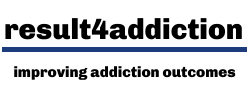Cannabis treatment research
selected articles
➊ Psychosocial interventions
Socially acceptable drugs such as cannabis are difficult to give up
Psychosocial treatments for uncomplicated addiction problems are generally not substance specific. The best psychosocial interventions build in new learning to support lifestyle change.
Cannabis is a readily available and commonly used recreational drug in the UK. Where it becomes problematic, social support is key to the success of treatment, so, as with alcohol, it makes good sense to use a socially based method such as Social Behaviour and Network Therapy (SBNT) or the Community Reinforcement Approach (CRA). Moreover, cannabis is not one thing; the use of synthetic preparations, for example spice, poses greater challenges than for natural plant products.
Meta-analysis :: How good are psychosocial interventions?
Davis ML, Powers MB, Handelsman P, Medina JL, Zvolensky M, and A. J. Smits JAJ (2015) Behavioral Therapies for Treatment-Seeking Cannabis Users: A Meta-Analysis of Randomized Controlled Trials Evaluation & the Health Professions 38: 94-114
This study reviewed Behavioural Treatment (BT - contingency management, cognitive behaviour therapy, motivational enhancement, and relapse prevention) with being on a Waiting List (WL) or Active Treatment (AT - support or counselling). Behavioural treatments have modest benefits. Still only 50% of clients are abstinent for the first 2 weeks and half of these relapse within 12 months. The combined behavioural treatments were significantly better than the controls.
The chart shows the size of treatment effects. Effect sizes were similar for cannabis use and psychosocial outcomes.
➋ Pharmacotherapies
There is no gold standard pharmacotherapy for cannabis
Studies to date are inadequate for estimating effect sizes of pharmacotherapies. At this time no medications are recommended.
Findings indicate that SSRI antidepressants, mixed action antidepressants, bupropion, buspirone and atomoxetine are probably of little value in the treatment of cannabis dependence. The evidence is weak and further research is required.
➌ Other evidence
The long read :: Cannabis treatment in europe
The European Centre for Monitoring Drugs and Drug Addiction - ECMDDA (2015 84pages)
This report from EMCDDA provides a comprehensive review of the treatment needs of cannabis users, the research findings on treatment and specific cannabis interventions.
Medicinal uses of cannabis
Cannabis was once regarded as something of a panacea. In 1843 the distinguished Irish physician William O’Shaughnessy treated rheumatism, cholera, convulsions, tetanus with tincture of cannabis: “alleviation of pain, aphrodisia, mental cheerfulness, anti-emesis. The disposition developed was uniform in all.” Cannabis was listed as a treatment for dozens of medical disorders, sometimes with good effect other times less so, and thought by Queen Victoria to be “one of the most valuable medicines”.
In more recent times cannabis has been made an illicit substance in most developed countries, albeit the regulations and penalties vary greatly; nonetheless, there are now progressive steps in many places towards legalisation of cannabis for recreational use. There are at least 12 psychoactive phytocannabinoids of which THC, tetrahydrocannabinol, is best known and around 150 phytocannabinoids that do not have a psychoactive effect. Best known of these are cannabidiol, CBD, and cannabigerol, CBG; terpenes give smoked cannabis its characteristic scent.
There is good or reasonable evidence of the effectiveness of cannabis as an analgesic, anti-spasmodic, anti-inflammatory, anticonvulsant, anxiolytic, a treatment for PTSD and autism, an anti-psychotic, and hypnotic. Because cannabis contains so many compounds with beneficial effects the best results come from consuming the whole plant.
For expert guidance on prescribing medicinal cannabis products visit the Medical Cannabis Clinicians Society website…
More pages about addiction treatment…
Check out treatment for: alcohol, opioids, stimulants and cannabis






